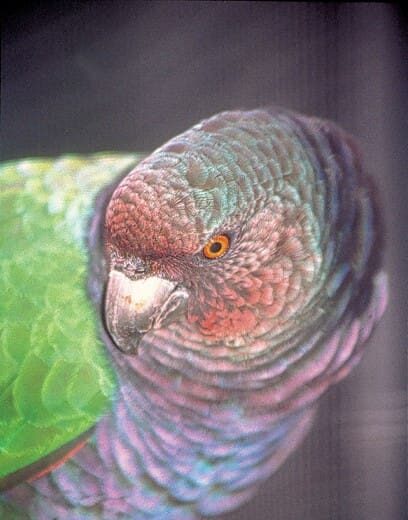The Imperial Amazon (Amazona imperialis) has a wild population of fewer than 50 (2018), with habitat loss, trade and hurricanes having decimated the species.
From 1999 to 2001, WPT supported the purchase of land to preserve habitat, educate local communities on the threats to the birds, research the ecology of the species, monitor adults and young through the breeding year and encourage in situ (in native range) captive breeding. Successful local education, land preservation and conservation stabilized the population of this species. In 2001, the WPT’s Canadian arm donated funds received through the Donner Canadian Foundation to the Rare Species Conservatory Foundation for their work in Dominica. Funds were used for monitoring and field research, a new 4×4 vehicle to navigate the rough roads in the area, land purchases to create a buffer zone on the edge of the national park, and to finish building the Visitor Centre. In previous years, the WPT provided the successful education bus “The Jacquot Express” to teach about the benefits of conservation.
In late 2017, the island of Dominica was hit by Hurricane Maria at Category 5, effectively wiping out the entire island. The Imperial’s population was hard hit, with only 20 birds +/-10-15 located so far.
Status: IUCN Critically Endangered / Appendix I
Population: As of 2018, about 20 birds have been sighted after back-to-back hurricanes in 2017, with a possible 10-15 more via their calls (Riello et al. 2019). Decreasing.
Threats: This parrot has a restricted range. Beginning around 1880, the species declined rapidly because of trapping, hunting and habitat loss. After some recovery, since 1979 hurricanes, most recently Maria, have dropped the population to an all-time low. These extreme events lead to widespread habitat destruction and direct mortality.
Range: Island of Dominica (Lesser Antilles)
Natural history: Imperial Amazons are found in the canopy of primary mountain rainforest up to 600-1300m (1968-4264 ft) but will descend in response to food shortages or foraging preferences. They consume flowers, fruits, nuts and young shoots of many tree species morning and evening.

